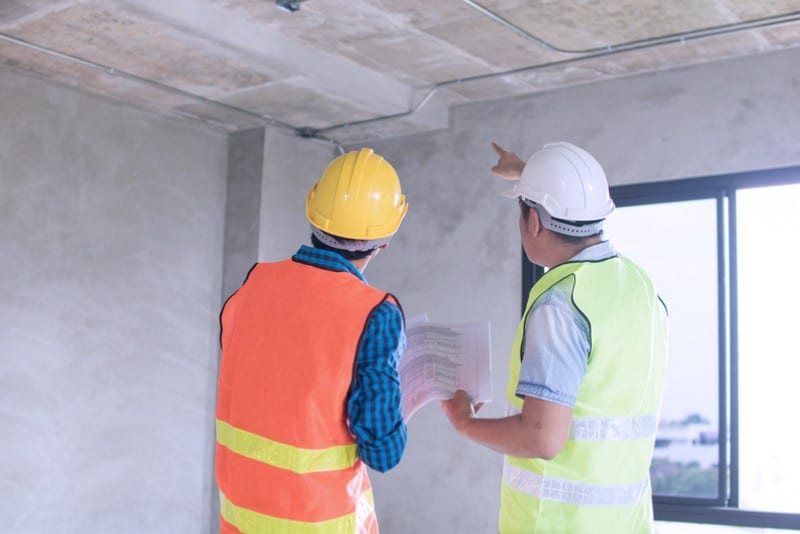
Construction sites are, by character, dangerous environments. Workers are often exposed to a range of hazards, from falls to machinery accidents and exposure to toxic substances.
In the year 2022, about 20% of workplace deaths occurred in the construction industry. About 38.4% of these deaths resulted from falls, slips, and trips. Moreover, the construction industry contributed a whopping 47.4% of all deathly falls, slips, and trips. (1)
For these reasons, construction site inspections are essential in maintaining safety, preventing accidents, and ensuring that the project progresses without unnecessary delays, legal issues, or financial hiccups. To carry out inspections effectively, you need an Inspection and Test Plan.
What is an ITP?
An Inspection and Test Plan (ITP) is a quality control documentation that lists all the inspections and tests required during a construction project. It also defines how the inspections will be carried out and who will do it.
Writing out these details into an official paper helps you keep track of inspections, given the complex nature of most construction projects. If you’re not sure how to draft your ITP, you may want to make use of ITP construction templates. These templates have distinct formats, and all you have to do is customize them with your content.
With that said, below are reasons why you need an Inspection and Test Plan when building your home.
To Adhere to Quality Standards
ITPs ensure all construction activities conform to the relevant quality standards. Quality assurance is a sure approach towards consistency, reliability, and regulatory compliance.
Consider the numerous trades, materials, and subcontractors typical of construction projects. Without a well-defined quality plan, many mistakes can occur and go unnoticed. This leads to defects, delays, and costly reworks. It can also damage the contractor’s reputation.
An ITP defines clear quality standards for each aspect of the construction project. The plan states when inspections should be done before proceeding to the next phase. It also ensures all construction materials and artisanship adhere to the relevant engineering standards. With such a robust quality management system, no undetected faults will be embedded in the construction work.
To Detect Issues Head On
Following your inspection checklist to the letter enables you to identify problems early enough before they morph into irreversible issues. Every construction project has several checkpoints or project milestones where quality inspectors certify the work. Such proactive monitoring lets you make adjustments as soon as you identify the defects.
As you rectify issues, you can gather and analyze data and use the findings to mitigate risk in the other stages of construction. Regular inspection also establishes a positive feedback loop between subcontractors and supervisors.

To Comply with Regulations
Construction projects must adhere to local and international codes and standards. These include local building codes on fire safety, structural integrity, and energy efficiency; occupational health and safety standards; environmental regulations; and international standards like ISO 9001 for quality management or ASME for mechanical systems.
Compliance usually isn’t optional. If you don’t toe the line, you may be fined, your permit may be revoked, or the authorities can take legal action against you. All these issues may significantly delay your home-building project.
ITPs provide a structured approach to ensure every step of the project is in compliance with the applicable regulations.
To Foster Better Communication
Inspection Test Plans help streamline communication among all project participants. An ITP clearly outlines what inspections will be done, in what order, who’s responsible for them, and acceptance criteria. This way, everyone taking part in the project has realistic expectations. Thus, the risk of miscommunication or conflicting interpretation of standards is kept to a minimum.
Consider that about 50% of workers claim that their productivity is affected by ineffective communication. This implies that proper communication boosts your workers’ productivity levels. (2)
Moreover, ITPs define the roles and responsibilities of all construction stakeholders for each phase of the project. This promotes accountability and ensures there are no overlaps or gaps in execution. With each participant knowing what is expected of them, the result is effective collaboration.
ITPs also act as a central reference point that the stakeholders of the home construction project can consult periodically. This encourages foresighted discussions, timely updates, and transparent issue resolution.
To Make the Project Cost-Efficient
ITPs are a tool to keep costs in check. Following the document to the letter helps resolve issues before they become costly problems. As mentioned, a good ITP will propose inspection points at critical junctures throughout the project.
This helps you identify defects on time while they’re still easy and economical to fix. This means there’ll be no need for rework, saving you the cash you’d have used on additional labor and materials. Studies reveal that construction defects cost about 5 – 10% of the total project costs. This is quite some money if you’re to lose it all. (3)
Another way ITPs save money is by avoiding penalties, contractual disputes, and project extensions, which can considerably deplete project funds.
Finally, ITPs ensure optimal resource allocation. They map out inspection stages and material requirements, allowing the team to schedule labor and order materials on time, minimizing waste and idle time.
In Conclusion
When building your home, make sure you have a properly drafted inspection and test plan. This document fundamentally outlines all inspections you intend to carry out during your home build and how to go about them.
Once you have an ITP in place, make sure you follow it unerringly to reap all the benefits listed above. Let not the efforts used in compiling the document go to waste by shelving it and running the project without the necessary inspections.
You can indeed draft your own ITP from scratch if you know your way around. However, using ITP templates is an easier and quicker way to have the document ready. You can also consult experienced construction experts on how to draft one for your specific project.
References
- “A look at falls, slips, and trips in the construction industry.” Source: https://www.bls.gov/opub/ted/2024/a-look-at-falls-slips-and-trips-in-the-construction-industry.htm
- “The State Of Workplace Communication.” Source: https://www.forbes.com/advisor/business/digital-communication-workplace/
- “Factors affecting defects occurrence in the construction stage of residential buildings in Gaza Strip.” Source: https://link.springer.com/article/10.1007/s42452-020-1959-1








